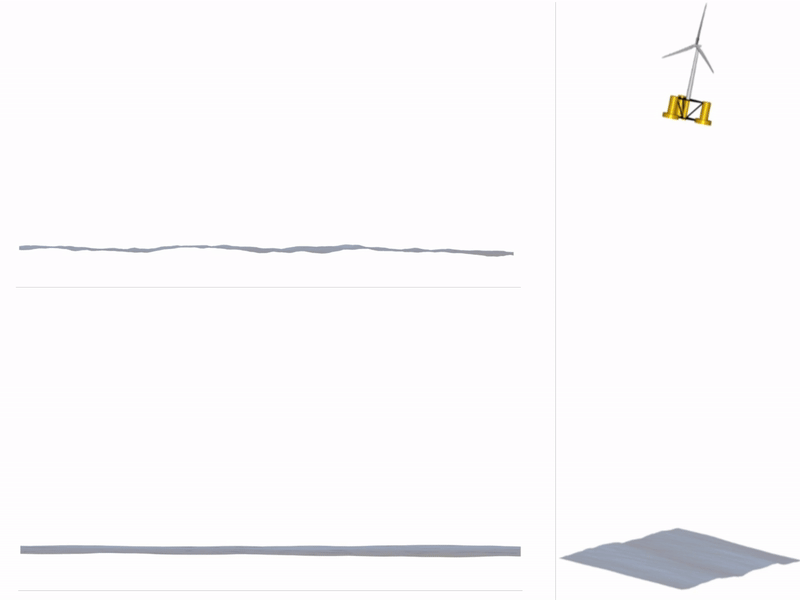Forum
Important Notice for New User Registrations
To combat an increasing number of spam and bot registrations, we now manually approve all new user registrations. While this may cause a delay until your account is approved, this step is essential to ensure the quality and security of this forum.
To help us verify your registration as legitimate, please use a clear name as user name or an official email address (such as a work, university, or similar address). If you’re concerned that we may not recognize your registration as non-spam, feel free to email us at with a request to approve your username.
Crash LLFVW and DMS Darrieus
Quote from Shubham on 5. November 2022, 17:35Hello,
I am running QBlade Lifting line simulations for Darrieus VAWT. For 1 and 2-bladed turbines, it works perfectly. For 3 and 4-bladed turbines, after 700-800 timesteps QBlade crashes without leaving any message. It also happens above TSR 2.5 – 3, and not below. I am guessing this happens when there is very high blade-vortex interaction in the simulation.
Another crash happens in the “Turbine DMS Simulation” of “Steady DMS Analysis”. When I create a new turbine and run a DMS simulation, it works fine. If I wish to delete a turbine DMS simulation (or replace it after changing the “Rotational Speed Max” or “Min”), it crashes.
One more observation: the Lifting line simulation crash doesn’t occur if I run on my virtual Windows machine (of my university) but happens on my local Windows workstation (so changing the computer system has an effect). These crashes happened in both 2.0.4 alpha and 2.0.4.8 alpha.
Can you please tell me the solution to these problems?
Kind regards
Shubham
Hello,
I am running QBlade Lifting line simulations for Darrieus VAWT. For 1 and 2-bladed turbines, it works perfectly. For 3 and 4-bladed turbines, after 700-800 timesteps QBlade crashes without leaving any message. It also happens above TSR 2.5 – 3, and not below. I am guessing this happens when there is very high blade-vortex interaction in the simulation.
Another crash happens in the “Turbine DMS Simulation” of “Steady DMS Analysis”. When I create a new turbine and run a DMS simulation, it works fine. If I wish to delete a turbine DMS simulation (or replace it after changing the “Rotational Speed Max” or “Min”), it crashes.
One more observation: the Lifting line simulation crash doesn’t occur if I run on my virtual Windows machine (of my university) but happens on my local Windows workstation (so changing the computer system has an effect). These crashes happened in both 2.0.4 alpha and 2.0.4.8 alpha.
Can you please tell me the solution to these problems?
Kind regards
Shubham
Quote from David on 5. November 2022, 22:10Hi Shubham,
thanks for reporting this bug! Indeed, there was an issue that caused a crash when a DMS Turbine was deleted. I have corrected this and this fix will be included from the next update onwards, so nothing to be done on your side.
Regarding the crash that you observed when running the LLFVW sims: The fact that this crash does only occur on one of two computers points in the direction that this issue is hardware dependent. LLFVW sims (depending on the settings) have a pretty high memory demand – so my guess would be that either your RAM – or your GPU memory is used up (if you are using OpenCL). I wouldnt suspect this issue to be related with blade vortex interaction – while this can cause the wake to diverge and the simulation to stop it doesnt cause a crash of the software.
It would be interesting to know about some of the settings that you are choosing when this crash happens: Are you storing the replay of the simulation? Are you using openCL, and if so on which device. What are your wake settings, and the number of free wake elements just before the crash happens. Are you running an aerodynamic only – or an aeroelastic simulation? How much RAM and GPU memory is used by QBlade when this crash happens? This info could help to narrow down the issue…
BR,
David
Hi Shubham,
thanks for reporting this bug! Indeed, there was an issue that caused a crash when a DMS Turbine was deleted. I have corrected this and this fix will be included from the next update onwards, so nothing to be done on your side.
Regarding the crash that you observed when running the LLFVW sims: The fact that this crash does only occur on one of two computers points in the direction that this issue is hardware dependent. LLFVW sims (depending on the settings) have a pretty high memory demand – so my guess would be that either your RAM – or your GPU memory is used up (if you are using OpenCL). I wouldnt suspect this issue to be related with blade vortex interaction – while this can cause the wake to diverge and the simulation to stop it doesnt cause a crash of the software.
It would be interesting to know about some of the settings that you are choosing when this crash happens: Are you storing the replay of the simulation? Are you using openCL, and if so on which device. What are your wake settings, and the number of free wake elements just before the crash happens. Are you running an aerodynamic only – or an aeroelastic simulation? How much RAM and GPU memory is used by QBlade when this crash happens? This info could help to narrow down the issue…
BR,
David


